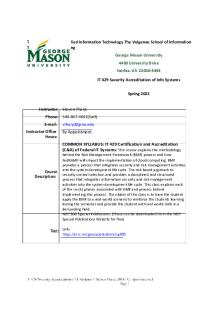429 - workt PDF

| Title | 429 - workt |
|---|---|
| Author | Anonymous User |
| Course | Marketing of Financial Services |
| Institution | Kenyatta University |
| Pages | 1 |
| File Size | 46.1 KB |
| File Type | |
| Total Downloads | 18 |
| Total Views | 143 |
Summary
workt...
Description
Galileo’s junior, he survived the master by only five years, dying at the age of thirty-nine, as Pascal was to do fifteen years later. A perhaps overly romantic account claims that Torricelli died from dismay and chagrin at being accused of plagiarism by Roberval. We have noted that Galileo valued the cycloid for the graceful form it would give to arches in architecture. In 1599, he also attempted to ascertain the area under one arch of the curve by balancing a cycloidal template against circular templates of the size of the generating circle. He incorrectly concluded that the area under an arch was very nearly, but not exactly, three times the area of the circle. The first published mathematical demonstration that the area is exactly three times that of the generating circle was furnished in 1644, by his pupil Torricelli, using early infinitesimal methods. Torricelli at the same time published a construction of the tangent to the cycloid at any given point on the curve. He made no reference to the fact that Roberval had earlier arrived at both the area and the tangent, so in 1646 the irritated Roberval wrote a letter accusing Torricelli of plagiarism. It is now clear that priority of discovery goes to Roberval, but priority of publication belongs to Torricelli, who probably independently rediscovered the two results. For finding the tangent, both men employed the method of composition of motions, described before in connection with drawing a tangent to the parabola. In the case of the cycloid, a point P on the curve can be thought of as subject to two equal motions, one a translation and one a rotation. As the generating circle rolls along the horizontal base line AB (see Figure 93), point P is carried horizontally while at the same time rotating about O, the center of the circle. One therefore draws through P a horizontal vector PR, for the translation component, and a vector PS tangent to the generating circle, for the rotary component. Inasmuch as the two vectors have equal magnitudes, the required tangent to the cycloid lies along the bisector PT of the angle RPS formed by the two vectors. Fermat proposed to Torricelli the problem of determining a point in the plane of a triangle such that the sum of its distances from the three vertices be a minimum. Torricelli’s solution was published in 1659 by his pupil Viviani. This point, now known as the isogonic center of the triangle, was the first notable point of the triangle discovered since the period of ancient Greek mathematics. An elegantly simple analysis of the problem was later furnished by Jacob Steiner.3 In 1640, Torricelli found the length of an arc of the logarithmic spiral. This curve had also been rectified two years earlier by Descartes and was the first curve after the circle to be rectified. In 1641, Torricelli noted that an infinite area, when revolved about an axis in its plane, can sometimes yield a finite volume for the solid of revolution. For example, the area bounded by the hyperbola xy = k2, the ordinate x = b (b > 0), and the x-axis is infinite, whereas the volume of the solid obtained by revolving...
Similar Free PDFs

429 - workt
- 1 Pages

Bell 429 product specifications
- 92 Pages

2- Arinc 429 -Specifications
- 21 Pages

Arinc 429 Tutorial
- 28 Pages

IT 429 Syllabus - Spring 22
- 5 Pages

Week 2 Lecture FIN 429
- 8 Pages

COS 429 Assignment 1 - homework
- 8 Pages

200-301-VCE-Dumps(414-429)
- 5 Pages

T1 Bus Arinc 429 part1 - Apunts 1
- 17 Pages
Popular Institutions
- Tinajero National High School - Annex
- Politeknik Caltex Riau
- Yokohama City University
- SGT University
- University of Al-Qadisiyah
- Divine Word College of Vigan
- Techniek College Rotterdam
- Universidade de Santiago
- Universiti Teknologi MARA Cawangan Johor Kampus Pasir Gudang
- Poltekkes Kemenkes Yogyakarta
- Baguio City National High School
- Colegio san marcos
- preparatoria uno
- Centro de Bachillerato Tecnológico Industrial y de Servicios No. 107
- Dalian Maritime University
- Quang Trung Secondary School
- Colegio Tecnológico en Informática
- Corporación Regional de Educación Superior
- Grupo CEDVA
- Dar Al Uloom University
- Centro de Estudios Preuniversitarios de la Universidad Nacional de Ingeniería
- 上智大学
- Aakash International School, Nuna Majara
- San Felipe Neri Catholic School
- Kang Chiao International School - New Taipei City
- Misamis Occidental National High School
- Institución Educativa Escuela Normal Juan Ladrilleros
- Kolehiyo ng Pantukan
- Batanes State College
- Instituto Continental
- Sekolah Menengah Kejuruan Kesehatan Kaltara (Tarakan)
- Colegio de La Inmaculada Concepcion - Cebu



